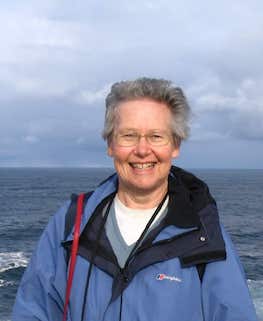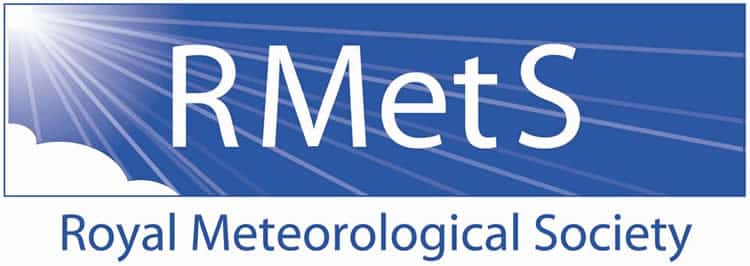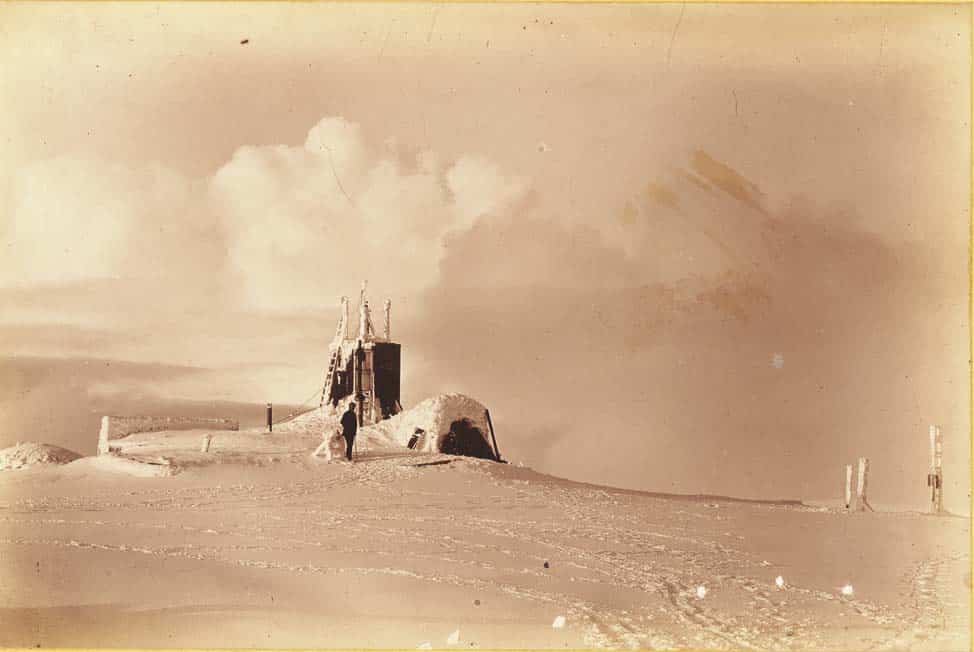Marjory Roy
Meteorologist
Marjory Roy 2005
Artistic Connections
I became involved with the “Scottish Superwomen of Science” project when Frances M Lynch contacted the Edinburgh Soroptimists club to ask for assistance with her 2017 Edinburgh Festival Fringe production. When we met in January 2017 I mentioned to her that meteorologists used an international numerical code to exchange weather observations which were then used as the basic data for computer models to forecast the weather. Frances was intrigued by the idea and used data I produced in this way about the Great Eyemouth Storm of 1881 to create “Stormsong 1881” with Eyemouth High School music students.
Music
This video is an exhibit at St Abbs Visitor Centre, Berwickshire, Scotland
Title: Storm in C
Music by: FRANCES M LYNCH
Words from: SYNOP Data Format (FM-12)
Written in: 2017
For: Female Voices
Performed by: Frances M Lynch
This music is part of the Stormsong 1881 Minerva Scientifica Project and was written in collaboration with Meteorologist, Marjory Roy. It is a direct translation of Meteorological data created from the Daily Weather Report which was published by the Met Office covering the period before during and after the storm of 1881.
It is a tribute to the community of Eyemouth, and their extraordinary courage and tenacity in recovering from the Great Disaster of 1881.
Title: “Stormsong 1881”
Music by: Eyemouth High School
Written in: October 2017
For: Mixed Voices, Brass, Woodwind, Guitars, Bass Guitar,
Performed by: Eyemouth High School, Eyemouth Primary School, Frances M Lynch
First Performed: Ebba Centre, St Abbs, Berwickshire, 18th June 2018
Funded by: The Institute of Physics Scotland, The Ambache Charitable Trust, Performing Rights Society Foundation
Illustration: Detail from ‘Wave’ by Jill Watson, part of a series of sculptures commemorating the disaster sited on the Berwickshire Coast. Photo by Benjamin Tindall
“Stormsong 1881”
Storm – Hannah Combe
Dark Skies – Graeme Thomson
Sea Salt – Duncan Horsburgh
Rough C’s – Dion Trafford
Soft Waves Crashing – Mirren McTavish
Bad Weather – Freya Herriot
Wave – Katie Walker
Widowed Women – Lois Atkinson
Tragic Days – James Oliver
The Eyemouth Disaster – Rhys White
Raingirl – Katherine Marsh
On the 14th of October 1881, a terrifying storm suddenly smashed into the Berwickshire Coast in the South East of Scotland, taking the lives of 189 fishermen, creating 107 widows and hundreds of orphans.
“Stormsong 1881” commemorating the disaster, written by 11 Eyemouth High School Students, is performed on this recording by 35 students and staff from Eyemouth High School, 82 children from Eyemouth Primary School and electric voice theatre.
It is a meteorological suite of music for voices, brass, woodwind and guitar based on the estimated three-hourly weather observations for Eyemouth provided by meteorologist Marjory Roy.
“In January 2017, I mentioned to Frances M Lynch, Artistic Director of electric voice theatre, that meteorologists used an international numerical code to exchange weather observations which were then used as the basic data for computer models to forecast the weather. Frances was intrigued by the idea and used data I produced in this way about the Great Eyemouth Storm of 1881 to create “Stormsong 1881” with Eyemouth High School music students.” Marjory Roy
Education
I was a pupil at the Mary Erskine School for Girls, Edinburgh and specialised in Maths, Physics and Chemistry.
I studied physics at Edinburgh University and graduated with a BSc with 2nd class honours in 1960. I then completed an MSc by dissertation in meteorology at Edinburgh University in 1961.
In 1990 I returned in my retirement to Edinburgh University and obtained in 1995 an MPhil by thesis on “A study of orographic effects on rainfall and their implications for the operational use of weather radar”
Occupations
I joined the UK Met Office in November 1961, working in forecasting, high altitude meteorology, agricultural meteorology and climatology. In 1981 the Met Office posted me to Edinburgh as the officer in charge of the climatological office for Scotland. I took early retirement in 1990.
I worked for 10 years as a volunteer car driver for the Scottish Ambulance Service, taking people to hospital appointments etc.
I became Honorary Secretary of the Scottish Centre of the Royal Meteorological Society and held that position until 2006.
Scientific Achievement
- Agricultural Meteorology – I was seconded for 4 years to the Grassland Research Institute at Hurley in Berkshire and provided meteorological expertise in the interpretation of their experimental results. Agricultural meteorology involves cross-discipline interaction, which is a concept that needs to be followed more widely, particularly in environmental science.
- Orographic Rainfall – I analysed a number of events of prolonged heavy orographic rainfall in Scotland. These had led to serious flooding, and I was able to advise the hydrologists who were responsible for flood warnings on the weather scenarios associated with those events so that they could better understand what was happening.
- Ben Nevis Weather Observatory (above) – I publicised the existence of this important resource of hourly mountain weather data through lectures and a book and made use of the data myself for research purposes. The data have now been digitised through a citizen science project which makes them readily available for further research.
Did You Know?
I am a member of SOROPTIMIST INTERNATIONAL EDINBURGH
An Inspiring Woman
I was inspired by Miss Loudon, my mathematics teacher at school.





